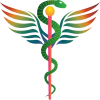Why Osteopathy?
I have witnessed so many people striving to obtain better health, freedom of motion, and decreased pain. Typically health is acquired through resistance training, cardiovascular workouts, diet, rest, flexibility, sleep, love, connection to ourselves and our community. It’s hard to juggle all of the variables simultaneously. Health is a moving target. We can’t rest on our accomplishments for very long before the level of health starts to dissipate. In the pursuit of health, sometimes injury occurs, and we start to experience pain. The body has an amazing ability to heal. But sometimes the healing is impaired and the job of the physician is to decrease the stress in the system so healing can occur. In Osteopathy, the body is seen as a unit. Removing stress from the body, in any way facilitates healing. Osteopaths are trained to release the stress and tension in the system. As the body heals it can decrease the trauma of injury and experience. The most important thing a doctor can do to help a person heal is to listen. I do my best to listen to your history, listen to your concerns, and listen to how your body is not able to heal. Because the musculoskeletal system and movement is so important to our health I use techniques that increase mobility through manipulation. The blend of techniques I use help with joint mobility, muscle relaxation, and mobilization of fascia. The osteopathic approach is tailored to meet you where you are at each appointment.
I treat adults of any age
The techniques I use will vary based on the individual. Most of my patients come because they are in pain. Finding and treating the joint immobility, the tightness in the tissue or the dysfunctional muscle firing pattern can help alleviate the pain. A lot of patients leave the appointment and feel better. The improvement may only last a short time. But through a few repetitions the improvement frequently lasts longer and longer. Frequently I prescribe physical therapy to help improve and maintain the improved function. I have helped a lot of patients who have plateaued achieve improved function and decreased pain. Over the course of treatment you will be asked to do some exercises to help with the impaired motion.
Working With Infants
When I work with infants it has mostly been to help with latching and breast feeding. However, I have seen infants and children with fussiness, constipation, and plagiocephaly. Many infants are relaxed during the treatment. However, when I work with the infants I hope to have the parents involved to help distract them by feeding them, playing with a toy, or singing to the child. I work to release the tight tissue to improve over function. Many infants are consistently more relaxed after the treatment. Overall, parents report positive changes. Breast feeding is complex, and there is no guarantee the desired outcome will be achieved. But I frequently have parents report that overall fussiness has decreased. The infant is more relaxed and the parents are less stressed and have more positive interactions. The family is a unit, and while the infant is the focus, helping the parents manage their self care is also very important.
Doctors of Osteopathy
In the United States, DO’s (Doctors of Osteopathy) hold the same unlimited practice rights as MD’s in all 50 states; they serve as commissioned officers in the medical corps, plus the Veterans Administration and Public Health Service and they are recognized by the AMA as full-practice physicians. They may prescribe drugs and perform surgery. Like MD’s, DO’s attend 4 years of medical school and then complete residency training in hospitals and clinics in their given specialty. Many DO’s and MD’s work as colleagues in a range of medical settings, and commonly refer to one another. In addition to classic medical training, Osteopathic Physicians receive a foundation in Osteopathic Philosophy and Osteopathic Manipulative Medicine (OMM), which is more holistic in orientation, by acknowledging the interrelationship of body, mind, and spirit.
